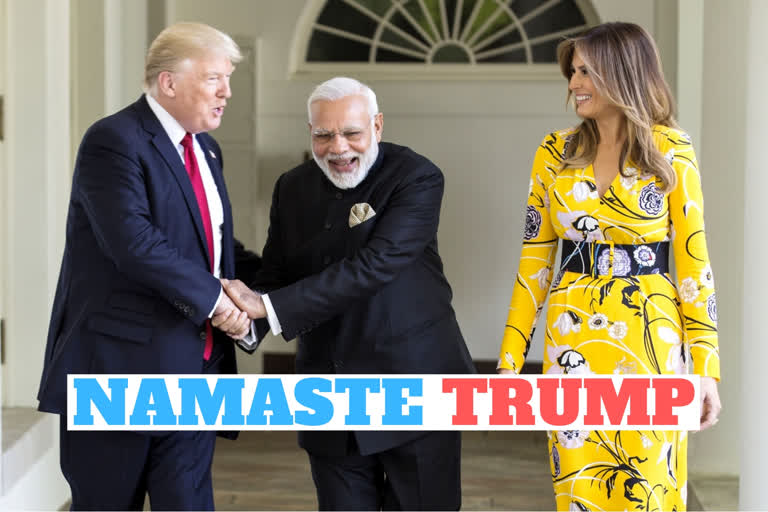New Delhi: President Trump will be paying a state visit to India on 24 and 25 February. Accompanied by his spouse Melania, he would land at Ahmedabad and be treated to a cultural extravaganza the likes of which he has never seen before and may not get to see again.
Announcing his visit to India at the Oval office in Washington on 12th February, he gushed that millions of people will be at hand to welcome him, enroute the world's largest newly constructed Sardar Patel cricket stadium, from the airport, where he and PM Modi, would address some 100,000 persons.
At New Delhi, a significant trade deal and defence procurement agreement are likely to be signed. The two leaders will cover a host of bilateral, regional and international issues of mutual interest and concern. It is noteworthy that India and the US have some 60 high-level dialogue mechanisms, including the "2+2 Ministerial Dialogue" (Foreign and Defence ministers), the second round of which was held in Washington in December 2019.
Read: Namaste Trump: Ahmedabad prepares for a gala welcome to US President Trump
In June 2016, India and the US forged a "global strategic partnership". The US also designated India a "Major Defense Partner" bringing her almost at par with the United States' closest allies and partners. For 40 years up till, 2005 India had practically not imported any defence equipment from the US. In the ensuing 15 years, America has emerged as India's second largest defence partner, supplying state of the art equipment and platforms worth $18 billion. Many more deals are on the pipeline.
Therefore, it is hard to believe that in December 1971, President Nixon ordered the US 7th fleet, led by the aircraft carrier USS Enterprise, to sail into the Bay of Bengal, to deter India, from assisting Bangladesh freedom fighters to get rid of the Pakistani tyranny. Not just that, the US tried to encourage its newly minted friend China, to open another front against India.
Read: Saving big trade deal with India for later: Trump
The USA took the lead in May 1998 to censure and sanction India after she went nuclear in May 1998. However, the extensive strategic dialogue between EAM Jaswant Singh and Dy. Secretary of State Strobe Talbott, who met 14 times in 7 countries on 3 continents, between 1998 and 2000, turned the crisis into an opportunity. The 5-day visit of President Clinton in March 2000, after a gap of 22 years, ushered in a new era in India US relations. There was no looking back.
President Bush pulled out all stops to bring India back from the nuclear cold. His phone call to President Hu Jintao of China, the last hold out against India, did the trick and India finally got a clean waiver from NSG (Nuclear Suppliers Group) on 6 September 2008. Earlier on 3rd March 2006, speaking in New Delhi, he stated – "The United States and India….. are closer than ever before, and the partnership between our free nations has the power to transform the world."
Addressing the Indian Parliament during his first state visit to India in November 2010, President Obama pledged to support India's permanent membership of the UN Security Council. "In Asia and around the world, India is not simply emerging," he noted, "India has emerged." Interestingly, way back in August 1950, the US is believed to have offered to support India’s permanent membership of the UN Security Council. PM Nehru however took the position that communist China was a better claimant.
Read: INTERVIEW: 'Partial deal unlikely, but trade does not define Indo-US ties'
In sum, India US relations have transformed beyond imagination, from being estranged democracies to engaged friends. What led to the 180-degree turn? There are both pull and push factors. The pull factors include – bonds of democracy and pluralism, Indian economic growth, size of Indian market and the influence of Indian diaspora. India's rise is welcomed by the US, as even in the long term, in all known scenarios, our interests do not diverge.
Among the push factors is the unprecedented rise of expansionist China, which is challenging the established geo-strategic paradigm and the US position as the world’s pre-eminent power. India is increasingly being seen as a countervailing power.
(Ambassador Vishnu Prakash - former Envoy to South Korea & Canada and Official Spokesperson of the Ministry of External Affairs – is a foreign affairs analyst and author.)



